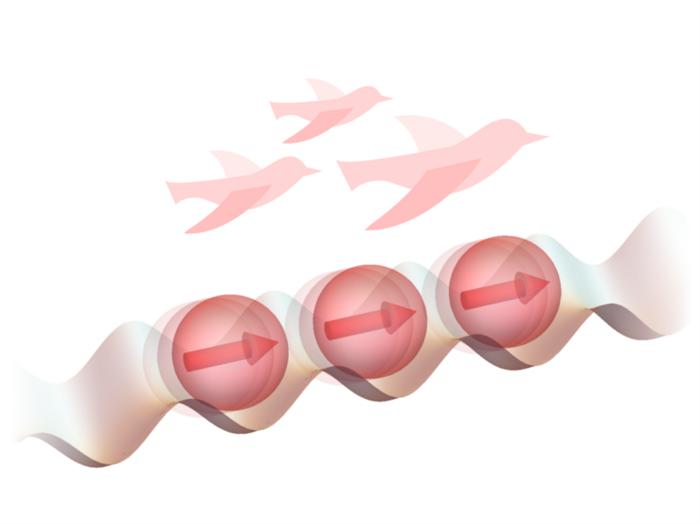Apr 26, 2024 (Nanowerk News) A collaborative research team from NIMS and Tokyo University of Science has successfully developed a cutting-edge artificial intelligence (AI) device that executes brain-like information processing through few-molecule reservoir computing. This innovation utilizes the molecular vibrations of a select number of organic molecules. By applying this...
Researchers advance detection of gravitational waves to study collisions of neutron stars and black holes
Apr 26, 2024 (Nanowerk News) A new study by an international team that will improve the detection of gravitational waves—ripples in space and time. The research aims to send alerts to astronomers and astrophysicists within 30 seconds after the detection, helping to improve the understanding of neutron stars and black...
flocking birds and ‘spinning’ particles
Apr 26, 2024 (Nanowerk News) Researchers Kazuaki Takasan and Kyogo Kawaguchi of the University of Tokyo with Kyosuke Adachi of RIKEN, Japan's largest comprehensive research institution, have demonstrated that ferromagnetism, an ordered state of atoms, can be induced by increasing particle motility and that repulsive forces between atoms are sufficient...
multiferroic nanodots for low-power magnetic storage
Apr 26, 2024 (Nanowerk News) Traditional memory devices are volatile and the current non-volatile ones rely on either ferromagnetic or ferroelectric materials for data storage. In ferromagnetic devices, data is written or stored by aligning magnetic moments, while in ferroelectric devices, data storage relies on the alignment of electric dipoles....
Unlocking the functional potential of mesoporous materials through modular nanocrystal assembly
Apr 26, 2024 (Nanowerk Spotlight) Mesoporous materials have emerged as a frontier of materials science, thanks to their unique combination of high surface area, tunable pore sizes, and ability to host functional components. These properties make them exceptionally promising for applications like catalysis, energy storage, chemical separations, and drug delivery,...
Breakthroughs in optical modulation using tunable 2D materials
Apr 26, 2024 (Nanowerk News) Tunable optical materials (TOMs) are revolutionizing modern optoelectronics. In integrated photonics circuits, precise control over the effective refractive index is crucial for unlocking groundbreaking applications. Two-dimensional materials such as Transition Metal Dichalcogenides (TMDs) and graphene offer exceptional optical responses to external stimuli. Yet, achieving distinct...
Black hole ‘traffic jams’ discovered in galactic centers
Apr 24, 2024 (Nanowerk News) An international study, led by researchers from Monash University, has revealed crucial insights into black hole dynamics within massive discs at the centres of galaxies. Published in the Monthly Notices of the Royal Astronomical Society ("The effect of thermal torques on AGN disc migration traps...
Pattern formation in the nano-cosmos
Apr 24, 2024 (Nanowerk News) A new model developed by scientists from the Max Planck Institute for Dynamics and Self-Organization (MPI-DS) extends the theory of elastic phase separation towards nanoscopic structures. Such patterns are frequent in biological systems and also used in nano-engineering to create structural color. With their new...
Mechanical strain control of quantum transport in graphene enables new class of nanoelectronic devices
Apr 24, 2024 (Nanowerk Spotlight) Controlling the flow of electrons through materials at the nanoscale is essential for the development of advanced electronics and quantum technologies. Scientists have long sought ways to precisely tune how electric current moves through two-dimensional materials like graphene, which consists of a single layer of...
Novel Au-BiFeO3 nanostructures for efficient and sustainable degradation of pollutants
Apr 24, 2024 (Nanowerk News) The need for sustainable and environment-friendly solutions has accelerated the global demand for green and renewable technologies. In this regard, semiconductor photocatalysts have emerged as an attractive solution, owing to their potential in mitigating pollutants and harnessing solar energy efficiently. Photocatalysts are materials that initiate...










